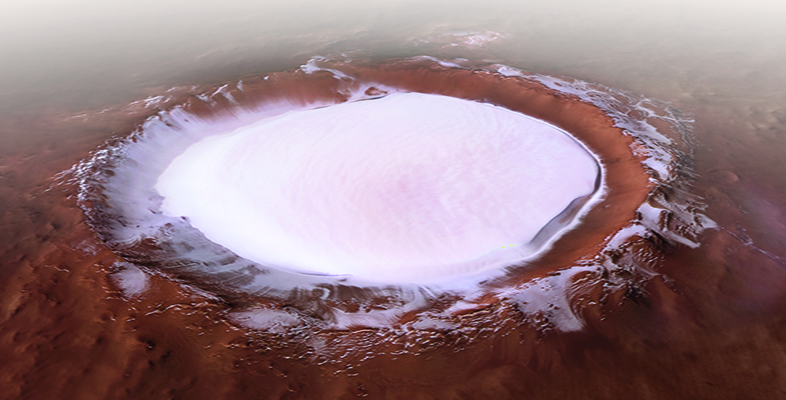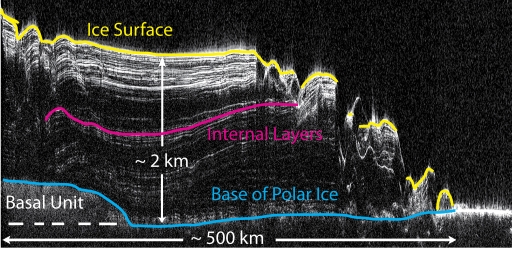4.7 Mars Reconnaissance Orbiter
In 2005, NASA sent its most powerful orbiter (even to date, 2021) to Mars. The Mars Reconnaissance Orbiter (MRO) is equipped with a number of instruments with which to image the surface, determine its mineralogy and even investigate the subsurface.
Figure 37 shows a stunning example of an image taken by MRO’s High Resolution Imaging Science Experiment (HiRISE), capable of imaging the surface of Mars at 30 cm per pixel. It shows horizontal layers or beds that are probably sedimentary rocks deposited in a standing body of water. These beds also appear to be disrupted, possibly by episodic flooding. Sedimentary beds can also be seen on Figure 38, which shows the floor of the Ebersawalde impact crater, further evidence of significant bodies of liquid water in Mars’ past.
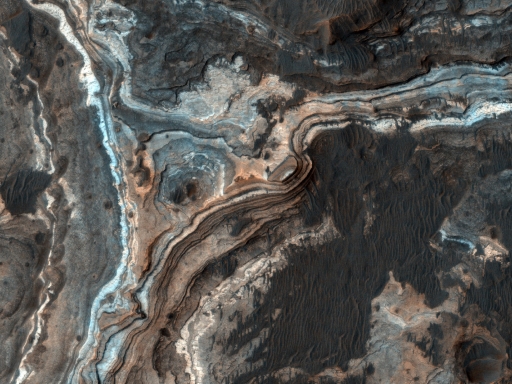
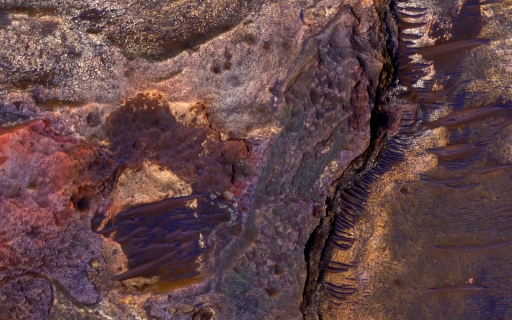
HiRISE has also identified processes that are happening now on Mars. Figure 39 shows two images taken three years apart. Comparing these, you can see a new channel (labelled with an arrow) on the more recent, right-hand image that is absent in the older image. This means a process is operating now on the martian surface that can produce features such as this. Although at first this was thought to be a process involving water, it is now believed to be formed by the sublimation of carbon dioxide frost over the martian winter. Similar processes are thought to be responsible for other surface features (e.g., Figure 40), but this shows that geomorphology is not always a reliable tool with which to look for water.
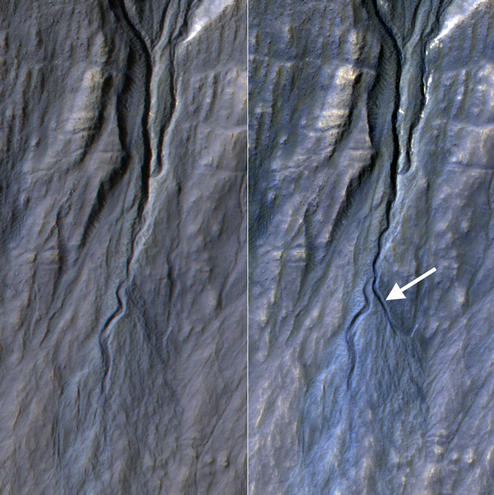
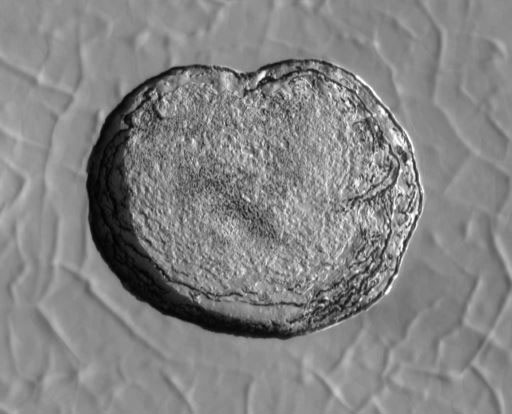
MRO has two other instruments important to the search for water. The CRISM (Compact Reconnaissance Imaging Spectrometer for Mars) instrument can detect minerals on the martian surface at a resolution of 18 m per pixel. Consistent with previous spacecraft, it has found widespread clay minerals, but has also identified sulfates and carbonates. These were previously unseen by lower resolution orbiting instruments but had been identified by spacecraft on the martian surface. Figure 41 shows a false-colour image created using CRISM data to highlight the distribution of certain minerals in Jezero crater. These data were key in selecting this crater as the landing site for the NASA Perseverance rover, which you will hear more about later.

MRO also carries SHARAD (SHAllow RADar sounder), a radar instrument, like MARSIS on Mars Express. This has found that the ice at the north pole is around 2 km thick and has internal layers (Figure 42), but it has also found ice at other areas of Mars, located approximately 90 m below the surface (Figure 43).
